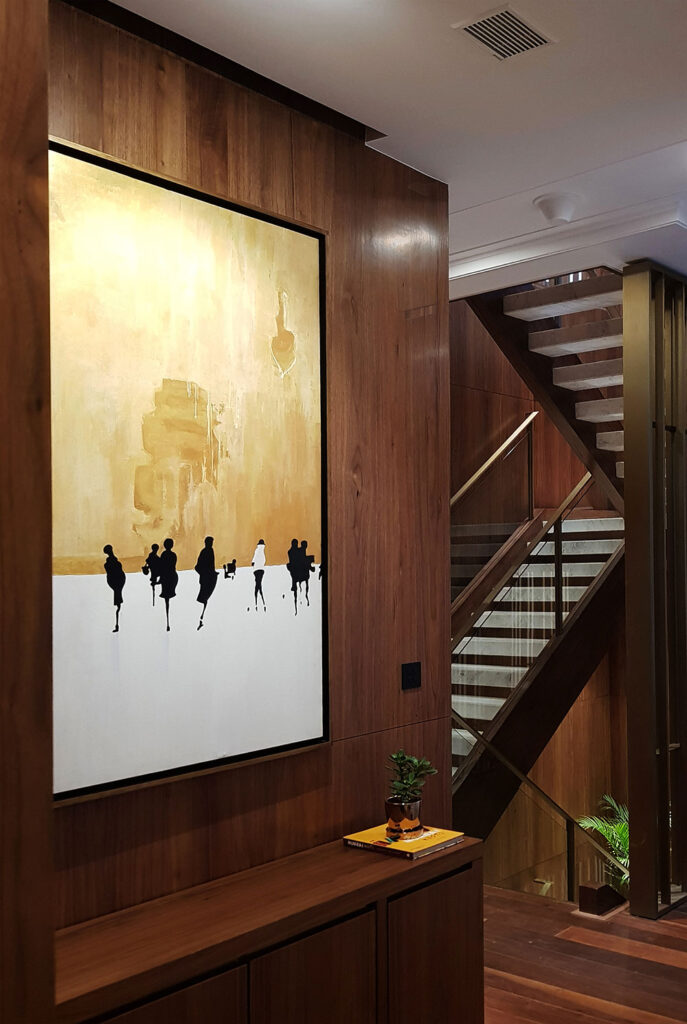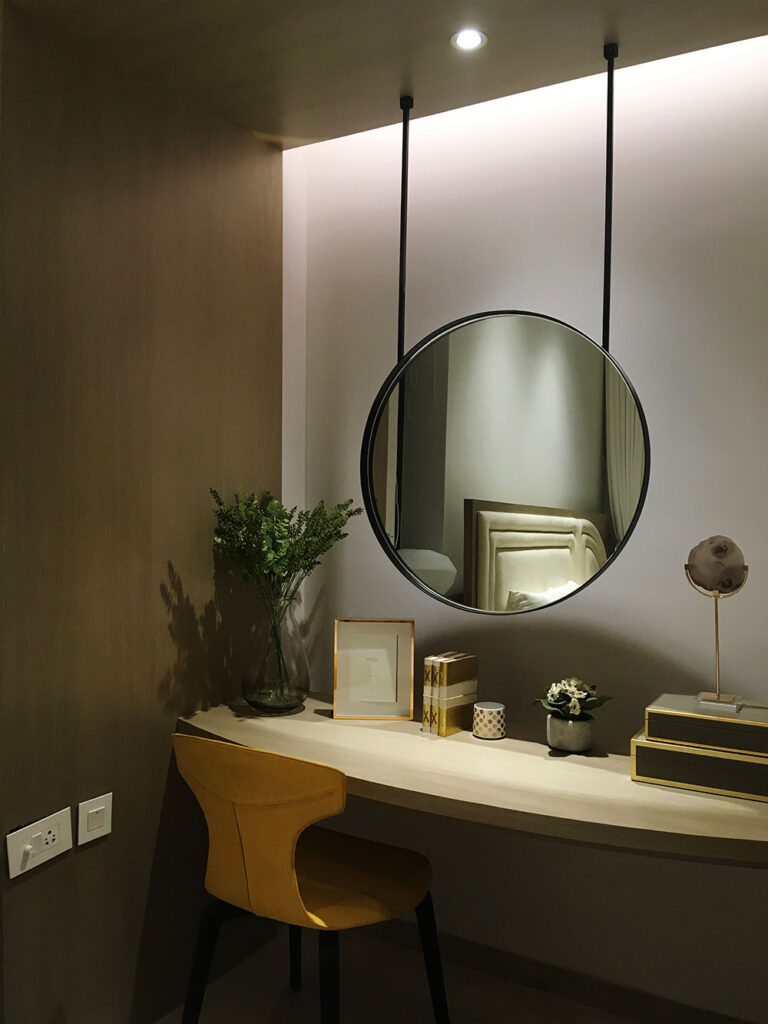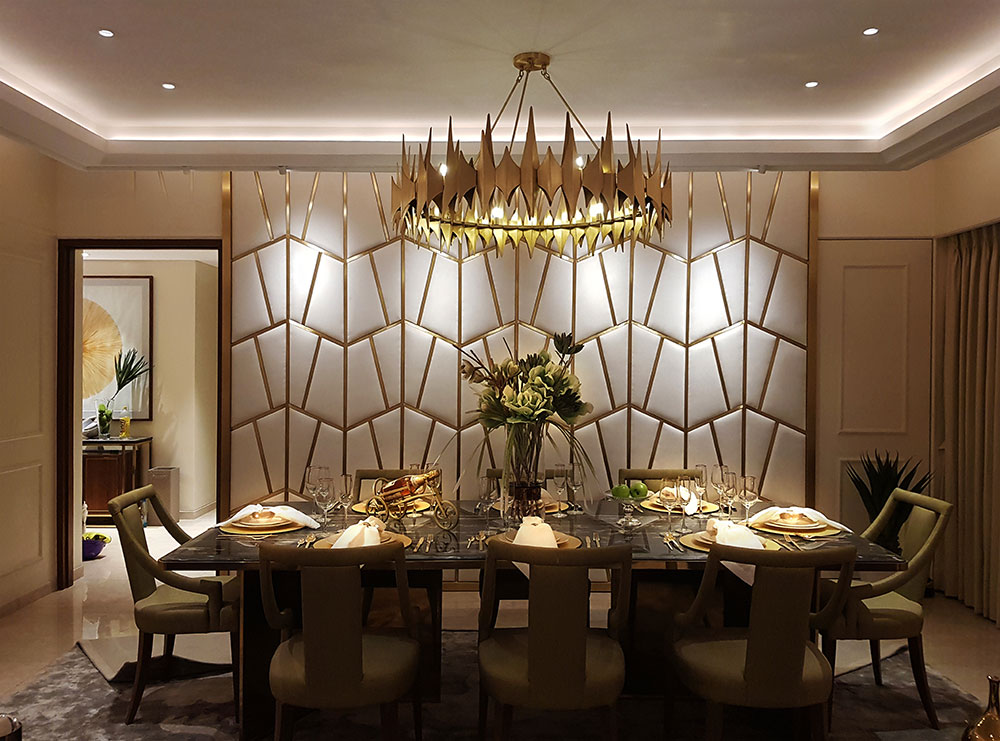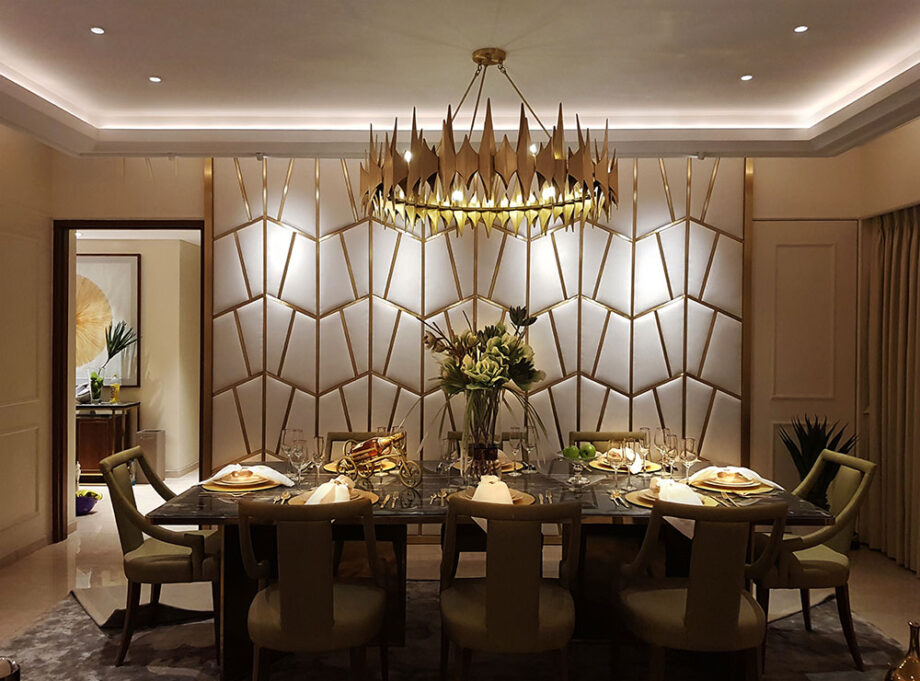After a long day at work, our bedroom helps us recoup for the following day. The lighting in our bedroom is a crucial part of the design as it greatly affects us biologically and psychologically by governing our sleep patterns, moods, and overall well-being.
Three quintessential factors to be considered while illuminating your bedrooms are as follows
1. Layered Lighting
Layered lighting is a must for a successful bedroom design. Every activity within a bedroom requires a specific type of lighting. This can be achieved by effectively balancing the three layers of lighting in your bedroom, namely – Ambient, Task and Accent Lighting.

. Ambient Lighting
Forming the base for the bedroom lighting scheme, this layer illuminates your bedroom uniformly and ensures that your general tasks such as – folding clothes or making the bed are carried out smoothly. Ideal ambient lighting consists of a combination of natural and artificial lighting. Artificial ambient lighting is best achieved with the help of pendant, flush ceiling or wall-mounted luminaires.
. Task Lighting
Activities like reading, working, or helping you pick the right apparel for the day from your wardrobe, requires focused lighting which cannot be provided through ambient lighting. Task lighting is the layer that carries out this function in your bedroom. Luminaries such as – sconces fixed on either side of the bed, spotlights within the wardrobes or bathroom, etc. are best suited for task lighting.
. Accent Lighting
If you are looking to personalise your bedroom with artwork, or intend to highlight an interior or architectural feature, accent lighting is the solution. Wall-mounted spotlights, downlights, track lights or even low-hanging pendants can bring about a play of light by adding interesting focal points within your bedroom space.
2. Proportion and Scale of the Bedroom
The types of luminaries to be used entirely depend on the scale and proportion of your bedroom. The ceiling height, span, and the size and proportion of the openings must all be considered while designing the lighting scheme for your bedroom.

3. Interior design scheme
Lighting design is no more a stand-alone process in the space-making exercise but is a cumulative one. A good lighting scheme is always in conjunction with the design intent, colour scheme, and decor of the space holistically, enhancing the potential of your bedroom.

Lighting is the thread that weaves the narrative of a space together, making it the most crucial element in a design process. Considering these essential factors ensures your bedroom is equipped to support all your activities with utmost comfort while setting just the right mood to harbour a relaxed and warm atmosphere.


